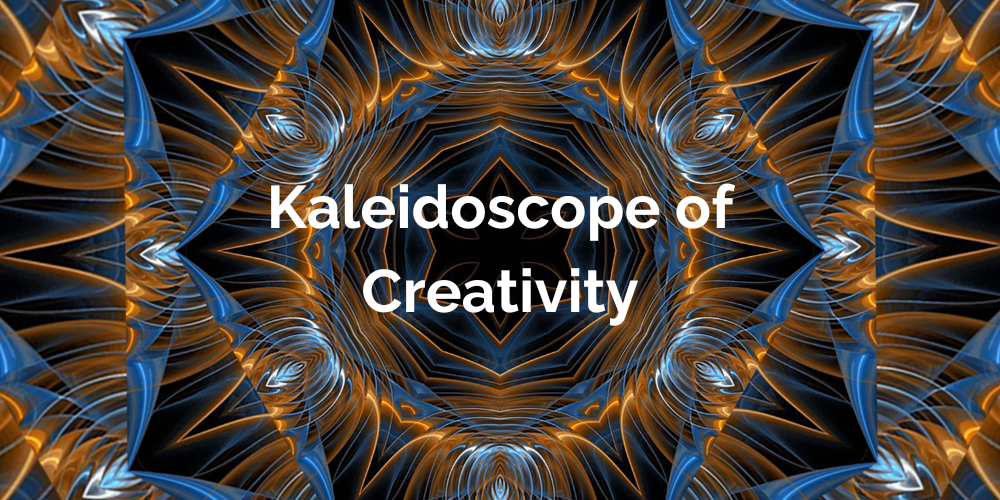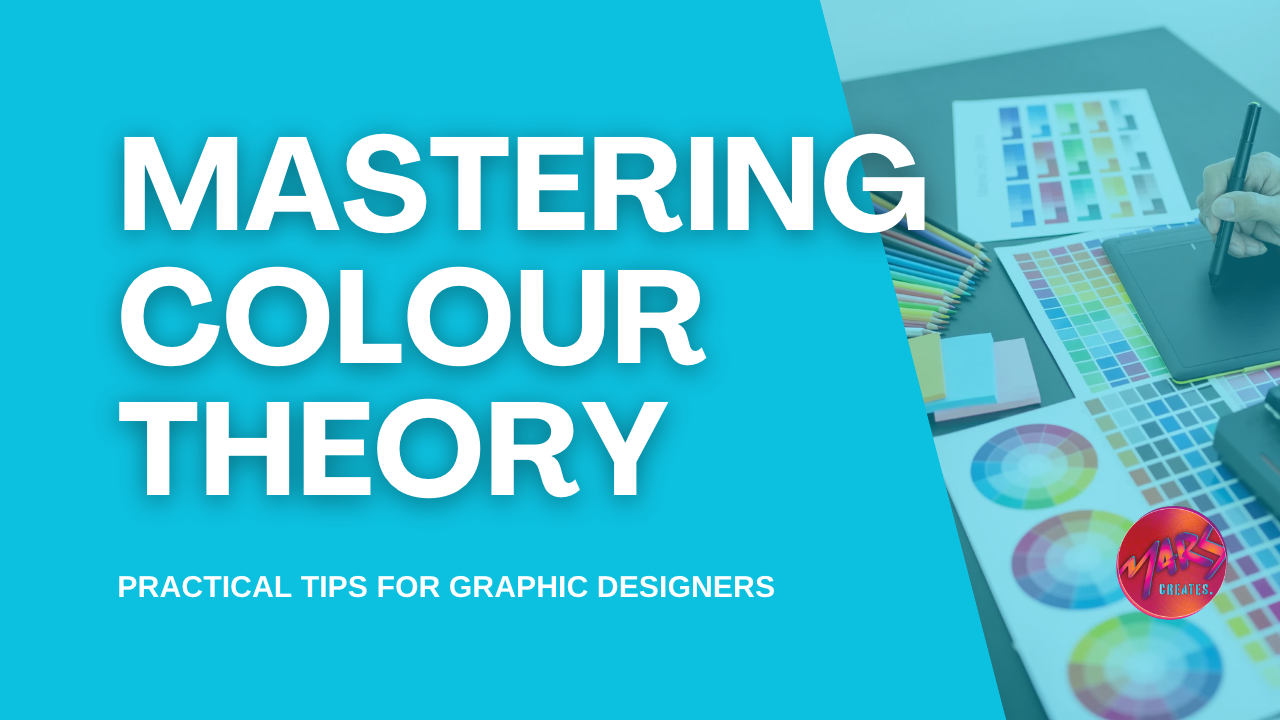Color Me Crazy: Mastering Color Theory in Graphic Design
Introduction
Are you ready to embark on a colorful journey that will elevate your graphic design skills to new heights? In this guide, “Color Me Crazy: Mastering Color Theory in Graphic Design,” we’ll unravel the secrets behind the art of combining colors harmoniously, conveying emotions, and creating eye-catching designs that leave a lasting impact. Whether you’re a seasoned designer or just starting, understanding the nuances of color theory can set you apart in the competitive world of graphic design. So, let’s dive in and explore the vibrant realm of colors!
Color Me Crazy: Mastering Color Theory in Graphic Design
In the world of graphic design, color isn’t just a visual element; it’s a language that communicates ideas, emotions, and messages. Mastering color theory empowers designers to orchestrate a symphony of shades, tones, and hues that resonate with their audience. By understanding how colors interact and influence each other, you can create designs that evoke specific moods, guide attention, and enhance user experiences.
The Basics of Color Theory
Before we dive into the intricacies, let’s lay the foundation. Color theory revolves around the color wheel, a visual representation of primary, secondary, and tertiary colors. Understanding concepts like hue, saturation, and brightness is crucial as they form the building blocks of effective color combinations.
The Psychology of Color
Colors have a profound psychological impact on human emotions and behavior. They can evoke feelings of excitement, trust, serenity, or urgency. Delve into the psychology of colors to ensure your designs resonate with the intended message and audience.
Creating Harmonious Color Schemes
Achieving a harmonious color palette is an art in itself. Explore various color schemes, including complementary, analogous, and triadic, to craft visually pleasing and balanced designs. Learn how to avoid clashing colors that can disrupt the overall aesthetic.
The Role of Contrast and Accessibility
Effective use of contrast ensures that your designs are not only visually appealing but also accessible to all users, including those with visual impairments. Discover techniques to maintain readability and convey information clearly through proper color contrast.
Color in Branding and Identity
Colors play a pivotal role in shaping a brand’s identity and perception. Dive into real-world examples of successful branding strategies that harness the power of color to convey brand values, establish recognition, and foster an emotional connection with consumers.
Color Me Crazy: Tips for Choosing the Right Colors
With countless color options at your fingertips, how do you make the right choices? Uncover expert tips and tricks for selecting colors that align with your design objectives, resonate with the target audience, and convey the intended message effectively

Taking Your Designs to the Next Level
Now that you’ve grasped the fundamentals of color theory, it’s time to take your designs to the next level. Let’s explore some advanced techniques and concepts that will elevate your design game and help you create truly remarkable visuals.
The Power of Color Gradients
Color gradients are a versatile tool that can add depth, dimension, and visual interest to your designs. Learn how to create smooth transitions between colors and apply gradients to backgrounds, text, icons, and more. By mastering the art of gradients, you can add a touch of sophistication and modernity to your creations.
Embracing Color Trends
Staying up-to-date with color trends can give your designs a contemporary edge. Discover how to incorporate trending colors into your projects while ensuring they align with your design goals and target audience. Balancing trendiness with timeless appeal is the key to creating designs that stand the test of time.
Color in Typography
Typography isn’t just about choosing fonts; it’s also about selecting the right colors for text. Explore the art of color typography, including techniques for enhancing readability, creating emphasis, and establishing a visual hierarchy through text color. Mastering this aspect of design can greatly enhance the impact of your messages.
Color Me Crazy: Crafting Emotional Designs
Colors have the remarkable ability to evoke emotions and feelings. Dive deeper into the emotional aspect of design by learning how to use colors to create specific atmospheres and sentiments. From calm and serene to vibrant and energetic, discover how to manipulate colors to elicit the desired emotional responses from your audience.
Case Studies: Real-Life Colorful Success
Let’s dive into real-life case studies where color theory played a pivotal role in the success of various design projects. Explore how different brands, artists, and designers harnessed the power of colors to create memorable and effective visuals. These case studies offer valuable insights and inspiration for your own creative endeavors.
Beyond Screens: Applying Color Theory to Print
While digital design is prevalent, print materials still hold their charm. Learn how to translate color theory principles from the digital realm to print media. Whether you’re designing brochures, posters, or business cards, understanding color reproduction, CMYK values, and paper types is crucial for achieving accurate and vibrant results.
Color Me Crazy: Challenges and Solutions
Even experienced designers face challenges when working with colors. Explore common color-related dilemmas and discover practical solutions. Whether it’s dealing with color inconsistencies across devices or achieving the right color balance in different lighting conditions, these tips will help you navigate through tricky situations.

Exploring Color Me Crazy: Mastering Color Theory in Graphic Design
Welcome back to our exploration of the enchanting world of color theory in graphic design. In this segment of “Color Me Crazy: Mastering Color Theory in Graphic Design,” we’ll delve even deeper into the intricacies of using color to evoke emotions, tell stories, and captivate audiences. So, let’s roll up our sleeves and embark on this colorful journey once more!
Crafting Visual Narratives with Color
Colors have the remarkable ability to convey narratives and stories without uttering a single word. Discover how to use color to set the tone and mood of your designs, effectively narrating a visual story that resonates with your audience. Explore techniques to create tension, build suspense, and evoke a wide range of emotions through your color choices.
Color Psychology: Beyond the Basics
While you’ve already delved into the basics of color psychology, let’s take it a step further. Explore the intricate nuances of color associations and meanings, delving into cultural and contextual influences. Uncover the subconscious impact of colors on human behavior and decision-making, and learn how to harness this knowledge to create designs that leave a lasting impression.
Creating Visual Hierarchy with Color
Achieving a clear and effective visual hierarchy is crucial in design. Dive into advanced techniques for using color to guide the viewer’s eye and prioritize information. Learn how to create emphasis, direct attention, and lead users through your designs intuitively. Whether it’s a website layout or a print advertisement, mastering visual hierarchy will elevate your design aesthetics.
Color in Motion: Animate Your Designs
In today’s digital age, motion graphics and animations are powerful tools for visual storytelling. Explore how color theory applies to dynamic designs, including video graphics, animations, and interactive user interfaces. Learn to play with color transitions, overlays, and effects to create mesmerizing visuals that capture and hold your audience’s attention.
The Fusion of Art and Science: Color and User Experience
Color isn’t just about aesthetics; it plays a critical role in user experience (UX) design. Delve into the science behind color perception and its impact on user interactions. Discover how to design user-friendly interfaces, enhance readability, and optimize color choices to create seamless and enjoyable user experiences across various devices.
Pushing Boundaries: Experimental Color Combinations
Break free from conventional color schemes and embrace experimentation. Explore unconventional color combinations that challenge norms and spark intrigue. Dive into the world of color contrasts, including split complementary, tetradic, and even clash harmonies. By pushing boundaries, you’ll create designs that stand out and make a bold statement.
Color Trends: Looking Ahead
The world of color is ever-evolving, with new trends emerging regularly. Stay ahead of the curve by exploring the latest color trends and predictions. From Pantone’s Color of the Year to industry-specific color forecasts, incorporating trending colors into your designs can give your work a modern and relevant edge.

The Kaleidoscope of Creativity: Unveiling Color Me Crazy
Welcome back, fellow designers, to the vibrant journey of “Color Me Crazy: Mastering Color Theory in Graphic Design.” In this segment, we’re about to unravel even more layers of the captivating world of colors. So, roll up your sleeves, grab your color wheel, and let’s dive right into the heart of this kaleidoscope of creativity!
The Dance of Light and Pigments
Have you ever wondered about the science behind colors? Explore the interplay between light and pigments that gives birth to the mesmerizing spectrum we perceive. Understand the differences between additive and subtractive color models, and how they influence everything from digital displays to printed materials.
Chromatic Synesthesia: Painting with Emotions
Imagine a world where colors have sounds and tastes. Chromatic synesthesia is a rare phenomenon where individuals perceive colors as sensory experiences. While you might not be a synesthete, you can still harness the essence of this phenomenon to create designs that evoke multi-sensory emotions in your audience.
Color Harmony: The Symphony of Senses
Color harmony extends beyond visual aesthetics; it’s a symphony that engages all the senses. Delve into the psychology of multisensory design, where colors are orchestrated to create a holistic sensory experience. Learn how to combine colors that not only look great but also feel right.
The Art of Subliminal Messaging
Colors hold subliminal messages that can influence decision-making without conscious awareness. Uncover the hidden meanings behind colors and how they can shape perceptions and behaviors. Explore techniques to subtly guide your audience’s thoughts and actions through strategic color choices.
Crossroads of Culture: Global Color Influences
Colors transcend borders, yet their meanings can vary drastically across cultures. Take a voyage through global color symbolism and explore how different societies interpret and respond to colors. Equip yourself with the knowledge to design for a diverse world, respecting cultural nuances and sensitivities.
Color Me Virtual: Designing for Immersive Environments
Virtual reality (VR) and augmented reality (AR) are redefining the design landscape. Discover how color theory adapts to the immersive realm, where users can interact with and be enveloped by color. Learn to manipulate colors in 3D space to create unforgettable and immersive experiences.
Sustainability and Color: A Harmonious Blend
In an eco-conscious world, color choices extend to sustainability. Explore eco-friendly color options, such as natural dyes and sustainable pigments, that reduce environmental impact. Learn how to integrate sustainability into your designs and contribute to a greener creative industry.

Igniting the Creative Spectrum: Unveiling Color Me Crazy
Welcome back, creative enthusiasts, to the captivating voyage of “Color Me Crazy: Mastering Color Theory in Graphic Design.” In this segment, we’re about to embark on a deeper exploration of the enchanting world of colors. So, grab your digital palettes, unleash your imagination, and let’s dive into the heart of this kaleidoscope of creativity!
Quantum Chromatics: Colors in the Digital Realm
In the digital age, colors take on a whole new dimension. Explore the fascinating realm of quantum chromatics, where colors are not just static elements but dynamic, interactive experiences. Delve into color gradients, animations, and dynamic color shifts that add a mesmerizing touch to your digital designs.
The Language of Symbolic Hues
Colors have been used as symbols since ancient times. Discover the rich tapestry of color symbolism across cultures, religions, and traditions. Unearth the hidden meanings behind colors and how they can be harnessed to convey profound messages and evoke deep emotions in your design narratives.
Color Fusion: Melding Art and Science
Bridging the gap between art and science, color theory is a harmonious blend of aesthetics and psychology. Dive into the scientific aspects of color perception, exploring how the human eye processes different wavelengths of light. This newfound understanding will empower you to create designs that resonate with viewers on a scientific and emotional level.
The Alchemy of Color Transformation
Just as an alchemist transforms base metals into gold, you can transform designs with the magic of colors. Explore color manipulation techniques, such as color grading and tonal adjustments, to enhance the mood and atmosphere of your visuals. Unveil the secrets to creating cinematic and spellbinding designs that captivate and enthrall.
Color Futures: Pioneering New Palettes
The future is brimming with color possibilities waiting to be discovered. Engage in a speculative journey through upcoming color trends and futuristic palettes. Experiment with colors that reflect the evolving tastes and aspirations of a dynamic world, and be at the forefront of design innovation.
Color Me Mindful: Designing for Well-being
Colors have a profound impact on our mental and emotional well-being. Delve into the world of color psychology for well-being and learn how to create designs that soothe, energize, and inspire positivity. Infuse your creations with colors that nurture the soul and contribute to a harmonious environment.
The Multiverse of Color: Exploring Alternate Realities
Virtual reality (VR) and augmented reality (AR) open doors to alternate dimensions of design. Immerse yourself in the multiverse of color possibilities where physical laws can be bent, and new dimensions of visual storytelling are unlocked. Learn to wield colors that create immersive experiences that blur the lines between reality and imagination.

FAQs: Your Colorful Queries Answered
Q: Can I use color theory to evoke specific emotions in my audience?
A: Absolutely! Colors have distinct emotional associations. For instance, warm colors like red can evoke passion and energy, while cool blues may convey calmness and serenity. Consider these associations when crafting your designs to elicit desired emotional responses.
Q: How can I ensure color consistency across different devices and mediums?
A: Achieving color consistency involves using standardized color profiles (such as sRGB) and conducting tests on various devices. Collaborate closely with printers, developers, and other stakeholders to maintain color fidelity from screen to print.
Q: What’s the role of color theory in web accessibility?
A: Color theory is essential for creating accessible designs. Ensure sufficient color contrast for text and graphics, especially for users with visual impairments. Use color to convey information, but also provide alternative methods (like text labels) to ensure inclusivity.
Q: Are there any ethical considerations when using color in design?
A: Absolutely. Colors can carry cultural, social, or political meanings that need to be approached with sensitivity. Be aware of potential misinterpretations and avoid using colors that may offend or alienate certain audiences.
Q: How can I use color theory to design for cross-cultural audiences?
A: Research is key. Understand color meanings and preferences in different cultures to ensure your designs resonate universally. Use culturally-neutral or versatile colors when targeting diverse audiences.
Q: Can color theory be applied to photography and image editing?
A: Definitely. Color theory enhances photo editing by helping you adjust colors to create desired moods or highlight specific elements. You can also apply color theory to compose visually striking photographs that engage viewers.
Q: What’s the significance of color in storytelling and branding?
A: Color plays a significant role in branding and storytelling. Consistent use of specific colors can create strong brand recognition and help convey the brand’s personality and values. Colors in storytelling evoke emotions and enhance the narrative’s impact.
Q: How can I use color theory to design for different age groups?
A: Consider age-related color preferences and perceptions. Bright, vibrant colors may appeal to younger audiences, while more muted tones might resonate with older demographics. Tailor your color choices to your target age group.
Q: Can I use color theory in interior design and architecture?
A: Absolutely. Color theory applies to various design disciplines, including interior design and architecture. Colors can influence the atmosphere of a space, affect spatial perception, and contribute to the overall design concept.
Q: What resources can I explore to further expand my knowledge of color theory?
A: Beyond this guide, there are numerous books, online courses, and design communities dedicated to color theory. Consider exploring works by Johannes Itten, Josef Albers, and interacting with fellow designers to share insights and experiences.
Conclusion: Your Colorful Odyssey
As we bid farewell to this colorful journey through “Color Me Crazy: Mastering Color Theory in Graphic Design,” remember that color is a boundless realm of creativity, expression, and communication. You’ve uncovered the secrets of color psychology, harmonious combinations, and advanced techniques that will forever enrich your design toolkit.
With every stroke of your digital brush, every selection of a color palette, and every experiment with shades and tints, you’ll channel the essence of “Color Me Crazy” into your designs. As you create, remember that you’re not just designing with colors; you’re crafting experiences, shaping emotions, and leaving your imprint on the visual landscape.
So, let your designs reflect the symphony of colors you’ve mastered. Create designs that tell stories, elicit feelings, and inspire action. Dive deep into the heart of color theory, and let it guide you as you embark on countless design adventures. Whether you’re sketching on paper, clicking away on a digital canvas, or transforming spaces into works of art, the principles of color theory will forever be your faithful companion.
Thank you for joining us on this exhilarating expedition through “Color Me Crazy: Mastering Color Theory in Graphic Design.” Now, it’s time to set your creativity ablaze, blend hues with intention, and continue coloring the world with your unique design brilliance!



